PUBLICATIONS
WORK OF REFERENCE, RESEARCH AND PUBLICATIONS
OUVRAGES, RECHERCHE ET PUBLICATIONS


PUBLICATIONS
WORK OF REFERENCE, RESEARCH AND PUBLICATIONS
OUVRAGES, RECHERCHE ET PUBLICATIONS
PUBLICATIONS
PUBLICATIONS

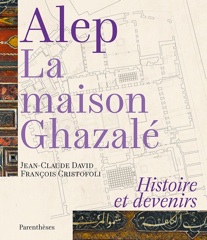




| Saudi Arabia and the United Arab Emirates feature ultra-modern cities with millions of residents that developed in opposition to the physical patterns of traditional historical settlements. In the past years, however, there has been a renewed attention to urban heritage and two metropolises, Jeddah and Dubai, have decided to aim for World Heritage status and to leverage historic city centres as engines of economic development and tools for the reinforcement of national identity. Recent strategies and plans are briefly discussed, underlining the specificities of the Arabian Peninsula context and its complex and evolving relationship with history and heritage. It is argued that the nominations for inscription on the UNESCO World Heritage List have been a catalyser for the definition of new planning and conservation policies integrating urban heritage into urban development strategies.
| Située au coeur d’Alep, dans un ancien quartier très cosmopolite, la maison à cour Ghazalé — du nom de ses derniers propriétaires — est réaménagée au XVIIe siècle par une famille chrétienne de notables, ensuite utilisée comme école allemande puis arménienne. Dans les années 2000, après près d’un siècle d’abandon, la maison est prise en charge par la Direction générale des Antiquités et des Musées de Syrie en vue de sa transformation en musée de l’histoire de la ville d’Alep. Les témoignages écrits, dessinés et photographiés rassemblés dans ce livre constituent une documentation indispensable. À travers l’histoire de cet ancien lieu de vie domestique, vestige et témoin d’époques révolues, l’ouvrage aborde celle d’Alep, ville plurimillénaire, carrefour économique et culturel du Moyen-Orient, et donne une idée de la qualité de vie qui l’animait. Au-delà de l’analyse de l’architecture et du décor intérieur exceptionnel, ce sont des pratiques de l’espace (féminin, masculin, privé, public...) qui sont révélées : un patrimoine matériel et immatériel vivant qui, malgré les destructions successives, ne tombera pas complètement dans l’oubli.
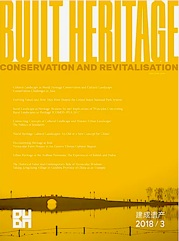
Alep, La maison Ghazalé, Histoire et devenirs
Auteurs :
Jean-Claude DAVID
François CRISTOFOLI
Editions Parenthèses
ISBN 978-2-86364-323-5
(paru le 7 mars 2019)
Urban Heritage in the Arabian Peninsula: The Experiences of Jeddah and Dubai
Simone RICCA
in BUILT HERITAGE, No.3 Volume 2 (2018)
Simone RICCA, 2007, Reinventing Jerusalem: the Israeli reconstruction of the Jewish Quarter, IB Tauris Publishing, London.
english
| The Jewish quarter of Jerusalem today seems like an organic fusion of a modern Israeli city with an ancient Jewish heritage. However, the aesthetics of the Jewish Quarter were deliberately planned and executed by Israel after it was occupied during the 1967 war. […] The book examines the politics of heritage conservation, and shows that the Old City's reconstruction did not so much preserve the past as inscribe an identity on to the future.
Simone RICCA, 2006, “The reconstruction of Jerusalem’s Jewish Quarter, An Example of Politically-driven Heritage Planning”, in FAWAZ M., (ed.), Urban Heritage and the Politics of the Present, City Debates 2005, AUB American University of Beirut, Lebanon, pp.98-108.
english
Simone RICCA, 2005, “Heritage, Nationalism and the Shifting Symbolism of the Wailing Wall”, in Jerusalem Quarterly File, n° 24, Jerusalem, pp.39-57.
english | arabic translation
Simone RICCA, 2005, “Politics, Ideology and Urban Conservation in the Palestinian Autonomous Territories (1996–2000)”, in MANISCALCO, F., 2005, Restauro in Palestina, coll. “Mediterraneum”, Vol.V, Massa Editore, pp.47-61.
english | italiano
Simone RICCA, 2003, “Constructing History in Jerusalem's Old City”, in Turath, issue 7, May 2003, p.8.
english


Simone RICCA, 2007, “Palmyra” and “Amman” in DUMPER M. and STANLEY B., 2007, Cities of the Middle East and North Africa – A Historical Encyclopaedia, ABC CLIO Inc., Santa Barbara California, Denver Colorado, Oxford, England, pp.33-35 & 293-296.
english





Simone RICCA, 2010, “Heritage, Nationalism and the Shifting Symbolism of the Wailing Wall - Updated Version”, dans Archives de sciences sociales des religions - 2010/3 (n° 151).
english
| The article analyzes the transformation of the Wailing Wall area after 1967 within an architectural and planning perspective, arguing that Israel needed physical, tangible symbols to sustain its claims on the city. The reconstruction of the whole area defined as “Jewish Quarter”, and particularly the creation of the large Plaza in front of the Wailing Wall, were meant to give the State of Israel an “incontrovertible” proof of its historic rights on the city.
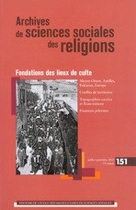


Simone RICCA, 2011, « Conservation, politique et patrimoine mondial au Moyen-Orient, le cas des villages antiques du nord de la Syrie », dans J.-C. DAVID, S. MÜLLER-CELKA, Patrimoines culturels en Méditerranée orientale : recherche scientifique et enjeux identitaires.
français
| Le patrimoine, en tant que produit du présent répondant à des besoins contemporains, est de plus en plus au centre du débat politique et des relations entre communautés, nations et états et est souvent évoqué pour nourrir le discours nationaliste. Parallèlement, une vision opposée et alternative s’est développée et formalisée, qui met en avant la dimension « universelle » du patrimoine et sa signification pour l’ensemble de l’humanité et qui s’articule autour des conventions internationales et de l’activité de l’UNESCO. Le cas des Villages antiques de la Syrie du Nord offre à cet égard des éléments de réflexion intéressants et peut contribuer au débat autour des processus de patrimonialisation populaires et institutionnels.

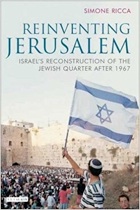
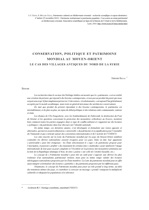

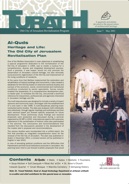

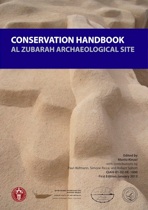
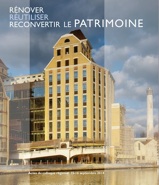
RICCA, S. - SOBOTT, R. - KINZEL, M. - HOFMANN, P., 2013, Conservation Handbook Al Zubarah Archaeological Site. (1 ed.) Copenhagen, Doha: Institut for Tværkulturelle og Regionale Studier.
english
| In the time of the fast changes experienced by our societies, remaining mindful of our past is more important than ever. This handbook contributes to our duty of remembrance and conservation of the past, by arguing on how to protect, preserve and present the architectural remains of Al Zubarah Archaeological site in Qatar, so that we may continue to visit this unique testimony of ancient global trade and cosmo-political connections. The handbook compiles all the existing information on the site, provides concept conservation guidelines and proposes specific technical solutions geared toward craftmen and workers during the conservation work.
RICCA, S., 2014, “La citadelle de Thang-Long Hanoi : patrimoine et identité nationale”, in Rénover, Réutiliser, Reconvertir le patrimoine, pp. 215-224, Actes du Colloque régional, 15-16 septembre, Somogy éd., Paris.
français
| Reconvertir le patrimoine, c'est le préserver.
Si cette affirmation sonne comme une évidence, la Région Île-de-France a souhaité mettre en lumière toute la complexité des problématiques liées à ce type de reconversion : comment reconvertir un bâtiment tout en respectant son histoire, ses matériaux, son âme ?
De la transformation d'une ferme en résidence étudiante à Champs-sur-Marne, jusqu'à l'écriture du roman national vietnamien à travers l'exemple de la rénovation de la citadelle de Hanoï, les intervenants du VIIIe colloque régional apportent de passionnantes réponses. Ces actes présentent l'intégralité des deux jours de débats.
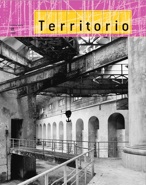
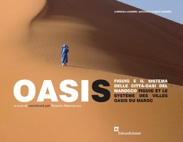
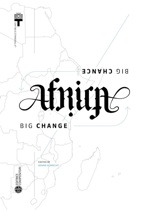

DE DOMINICIS, F., 2014, « Limes Africae. Anatomy of a frontier», in Albrecht B. (Ed.), Africa Big Change Big Chance, Editrice Compositori, Bologna, 2014.
english
| The African continent is the theatre to the most interesting phenomena of recent years, ranging from great demographic to climate and social changes. International institutions forecast that the urban population will reach 748 million in 2030, surpassing the total figure of Europe. The exhibition « Big Change Big Chance Africa » which took place for the Triennale di Milano, proposed to explore the changes in Africa’s physical environment: various focus were exposed, from architecture to the impact of new infrastructures, such as large dams, and solar and wind power plants, but also the challenges of major projects, such as reforestation, needed to stop the desert. This paperback offers a analysis of the logics of the African territorialities and their interactions with human actions.
DE DOMINICIS, F., 2015, « Figuig, I caratteri dello spazio aperto / Figuig les caractères de l’espace ouvert», in Mascarucci R. (Ed.), Oasis, Figuig e il sistema delle città-oasi del Marocco / Oasis. Figuig et le système des villes-oasis du Maroc, EdicomEdizioni, Monfalcone, 2015.
français | italiano
| Forte d’un écosystème unique conçu autour des ksour, sur la base du triptyque eau / palmeraie / habitat, l’oasis de Figuig présente un exemple éminent de l’établissement humain, dont la sauvegarde, aujourd’hui menacée, constitue la clé d’une nouvelle forme de développement. Les travaux menés par les différent contributeurs de cet ouvrage, dans le cadre du projet de réhabilitation de l’Oasis de Figuig, montrent comment la juxtaposition dialectique des deux termes du problème, à savoir les exigences de conservation et celles de développement, n’est pas seulement possible, mais aussi fructueuse.
DE DOMINICIS, F., 2017, « The Wandering Frontier. Sahel spatial order as evolutionary infrastructure» in «Territorio», 81, 2017.
english
| This paper aims to frame the layout of the Sahel settlement pattern in its historical perspective, as it has been depicted by three internationally renowned Italian, English and French scholars, by calling into question origins and current interpretations of some contested urbanization phenomena that occur today all along the southern edge of the Sahara Desert. Through the analysis provided by Turri, Davidson and de Planhol, which are accompanied by the first descriptions of the European travelers and compared to the most recent geospatial data, the paper investigates mechanisms and elements that characterize the inhabited Sahelian frontier, pointing out their unstable, drifting nature deeply intertwined with the geographical support, to finally demonstrate its continental extension toward a new form of regional, evolutionary non-urbanization.





